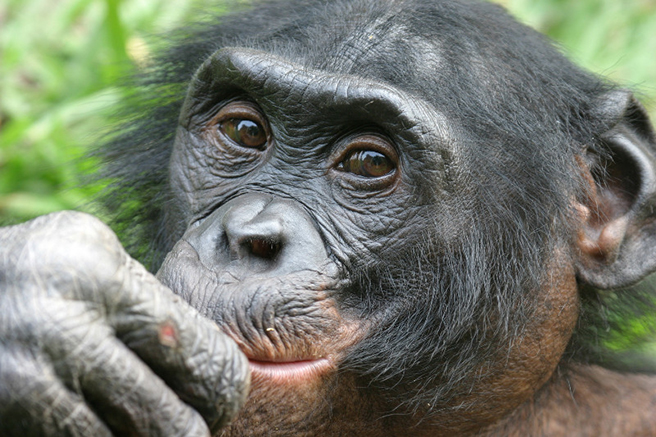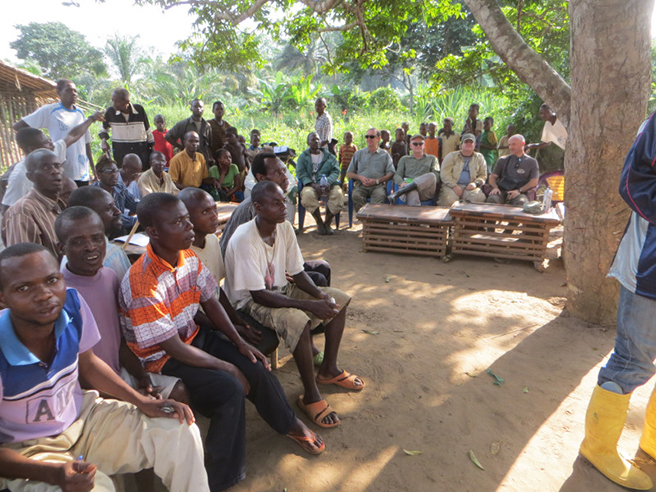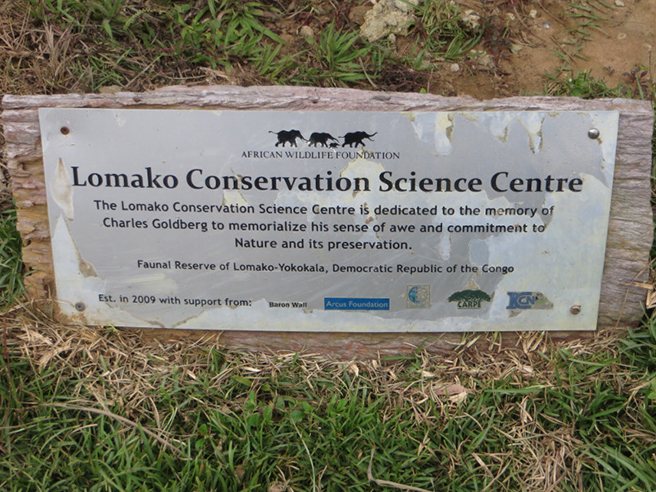Looping Locals in to Ecological Efforts

For the first time, everyday Congolese are taking an active role in the conservation of their country’s bonobos. In the Congo landscape, AWF has trained 50 people from the Congolese wildlife authority, Institut Congolais pour la Conservation de la Nature (ICCN), and the local community to use CyberTracker technology units to conduct ecological monitoring in the Lomako–Yokokala Faunal Reserve.
CyberTrackers are easy-to-use handheld ecological monitoring devices that automatically add in GPS data when users input ecological data. Say you spot a red river hog in the forest. You just note that in the CyberTracker, and it will also mark the exact location where the hog was spotted, allowing for more accurate recording of wildlife populations, densities, and locations. In Lomako, the ecological monitoring will provide evidence of the state of different species within the landscape and will allow AWF to assess for threats and opportunities.

Teams of five to eight people have begun walking the reserve, which for the purposes of this exercise has been divided into four smaller areas, for easier sweeping. Each individual on the team is tasked with looking for, or at, a different thing. One or two individuals might therefore be peering up in the trees for signs of monkeys, for example, while someone else might be more focused on the forest floor. The sightings get recorded into the CyberTracker while the teams are out in the reserve.
Later, this data is downloaded into a computer and automatically emailed to specified users, who can then confer over next steps, secure in the knowledge that all are working off of the same information. In the case of the Lomako ecological data, the information gets reviewed in near–real time by staff in three locations: While our Congo landscape director, Charly Facheux, is checking out the wildlife data from his office in Kinshasa in the Democratic Republic of Congo (DRC), our Great Apes Program director Jef Dupain is reviewing it at AWF headquarters in Nairobi, Kenya. Meanwhile, the head of our geographic information systems team, David Williams, monitors the same data from our Washington, DC, offices. Pretty cool, right?

The coolest thing, however, is that through this process, local Congolese are able to make a direct contribution to the conservation of the forests around them and be fully invested in the results. As Facheux explains, because Lomako is a fully protected reserve, people aren’t typically allowed inside the reserve borders unless they’re ICCN ecoguards (“ecoguard” is what the wildlife authority in DRC calls their rangers). Now, “for the first time, they are beginning to understand the value of conservation and their role in protecting Lomako,” he explains.
Facheux adds, “It was really wise to work with them. Community members know very well the geography of the forest.”
Work in Lomako is being funded by the Arcus Foundation, Endangered Species Chocolate, U.S. Agency for International Development’s Central Africa Regional Program for the Environment (or CARPE), and U.S. Fish & Wildlife Service.
